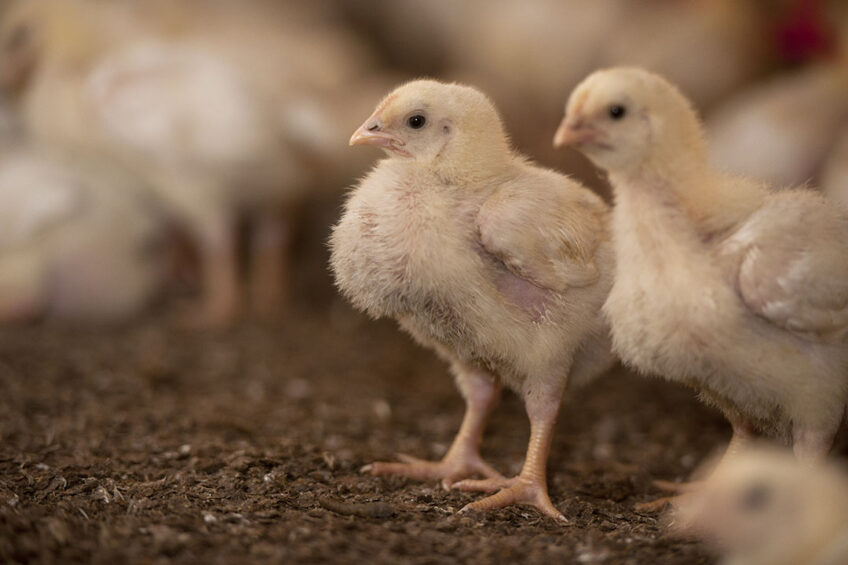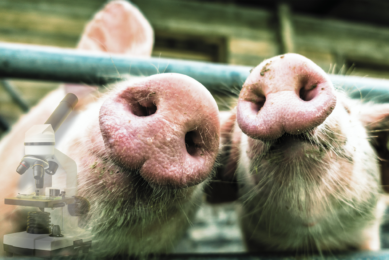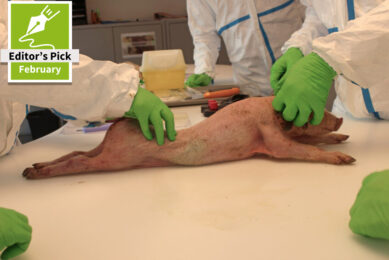Good intestinal integrity through optimised feeding and limited nutrient waste

Around 137 million tonnes of poultry meat were produced across the globe in 2020 and production is expected to rise to fulfil global demand for a population set to reach 9 billion by 2050. A healthy gastro-intestinal tract reduces the amount of resources required through optimising feed usage and limiting nutrient wastage.
Maintaining optimal intestinal flock health can play a huge role in ensuring long-term sustainable poultry production. But intestinal diseases, such as coccidiosis, necrotic enteritis, proventriculitis and gizzard erosion, can have a significant adverse effect on performance through impaired (increased) feed conversion ratio (FCR) and increased morbidity and mortality.
That is why Scotland’s Rural College (SRUC) produced a white paper which looked at 150 peer-reviewed research papers on intestinal condition, based on the Intestinal Integrity index, and its effect on key production parameters. Elanco’s platform-based comprehensive index of intestinal integrity was used as input for the study. This quantitative measurement tool uses a Health Tracking System (HTSi) to assess intestinal health based on performance data and flock health. It includes 23 health conditions known to affect intestinal health and thus bird performance, welfare, profitability and sustainability.
The Scottish university’s white paper addresses many of these health conditions and aims to increase industry recognition of the critical importance of gut health and intestinal integrity in broiler production. Co-author Professor Jos Houdijk said the modern broiler eats around 4.5 kgs of food during its 35-day lifespan which is equivalent to a human consuming 1,000 slices of bread a day. So, he said, it was not surprising that the broiler digestion system could be impaired, its immune response compromised and feed intake reduced.
The further you go with genetic selection the more important gut health is.
Coccidiosis
Professor Houdijk spoke of the coccidiosis challenge, which is one of the most detrimental and prevalent parasitic diseases in poultry production, costing the global poultry industry approximately £8.3 billion (€ 9.4 bn) a year. Caused by the protozoan parasites of the genus Eimeria, 7 of them are important for poultry. Of these E. necatix, E. brunetti and E. tenella are the most pathogenic. But E. maxima is the most immunogenic and moderately pathogenic and is known to cause production losses. E. maxima-infected birds typically have relatively the worst FCR because it infects the middle section of the small intestine (jejunum) causing damage from the duodenum to the ileum.
He also touched on gizzard erosion where dark spots are seen in the solid layer covering the gizzard, known as the koilin layer, and in the gizzard mucosa. This can either be congenital and therefore caused by factors that existed before hatching and associated with breeder age, breeder diets and capillary fragility arising from a transient increase in blood pressure during hatching, or through deprivation of feed or water, or both. Infections and microbial colonisation and the presence of C. perfringens in the small intestine have also been linked to gizzard erosion. Impacts include significant reduction in body weight of around 25% and a higher mortality rate (+1.7%) than the average total mortality rate of unaffected flocks at slaughter.
Reduced intestinal integrity can also cause increased volume and wetness of excreta which has an impact on litter condition and leg health. Footpad dermatitis and hock burn are conditions characterised by necrotic erosions on the plantar surface of the footpads and hock joint in growing broilers. These can cause serious welfare issues and economic losses, arising from downgrades and condemnations of affected portions of the leg. Footpad dermatitis was the most common condition across 53 UK flocks examined in 2017, with an average prevalence of 51.6%, while more than a fifth of flocks had some degree of hock burn.
It is these conditions that are threatening the immense genetic progress made in the broiler sector in recent years, which have seen day 35 bodyweight rise by 71%, despite feed intake only increasing by 14%, with an improved (reduced) FCR of 35%. “The further you go with genetic selection the more important gut health is,” said Professor Houdijk.
Footprint
And with pressure growing on the sector’s environmental footprint, he notes that poor gut health leads to increased resource input for the expected output. This results in more feed required for the same amount of output, additional bedding, more manure being produced and a lengthening of the fattening period, which demands additional resource input for environmental control (electricity, fuel, etc). “Each of these resource inputs, as well as manure management, have an environmental footprint and they contribute to the carbon footprint of poultry production,” the report added. Concluding, he stated that the Elanco HTSi database and the Intestinal Integrity index can be considered valuable tools for monitoring and managing poultry intestinal health and performance, as well as welfare, profitability and sustainability.











